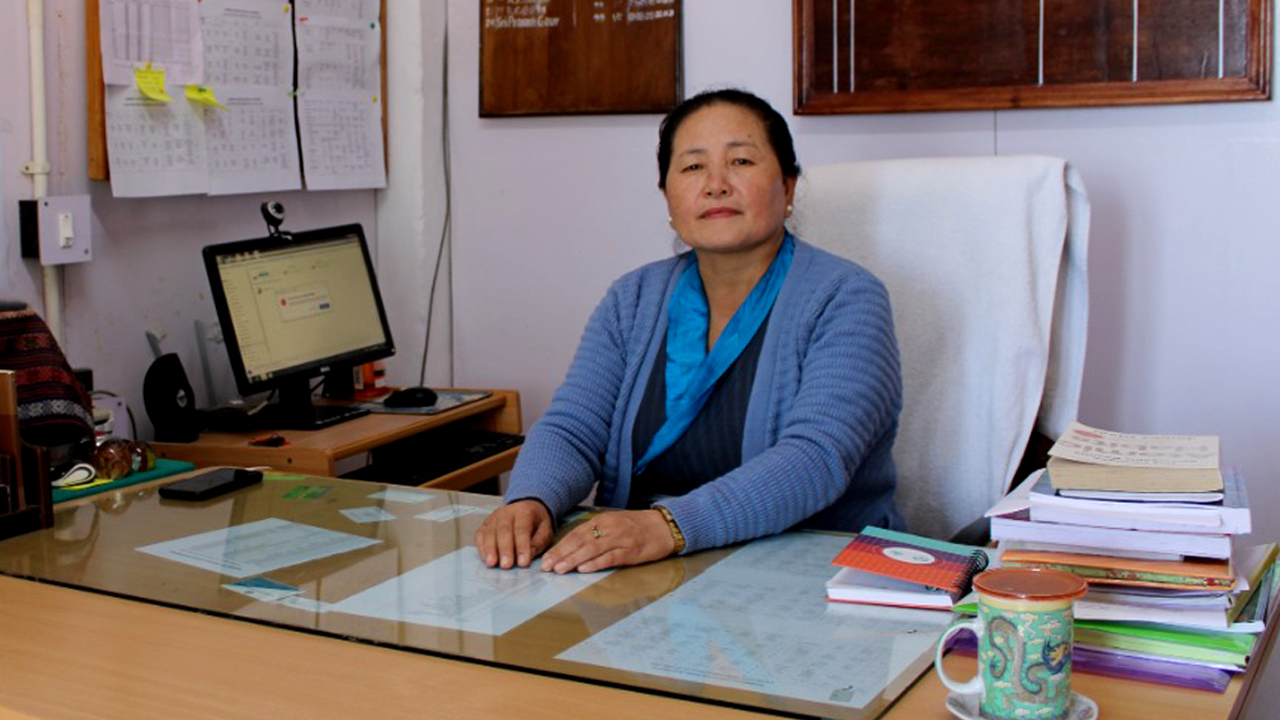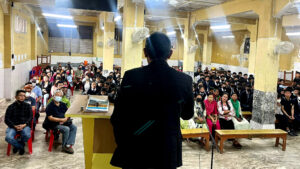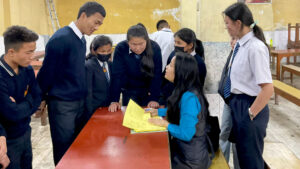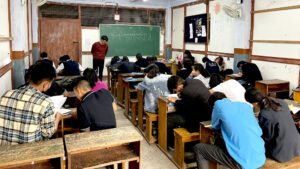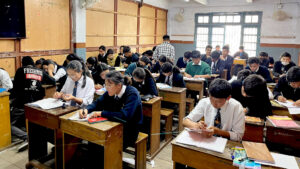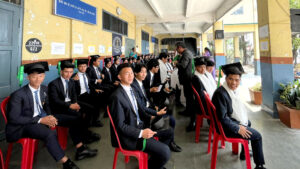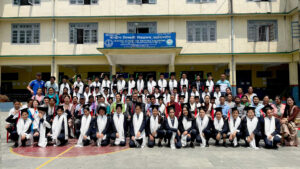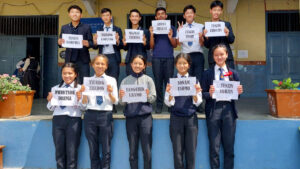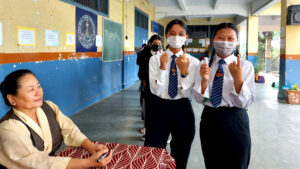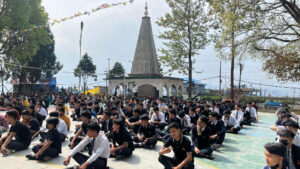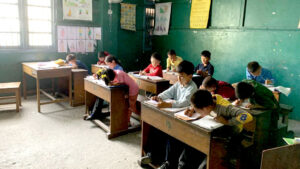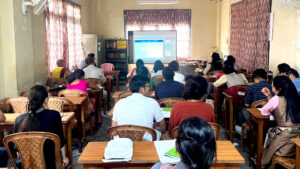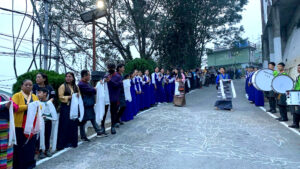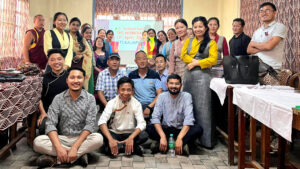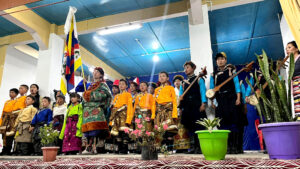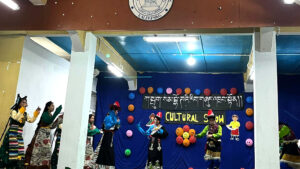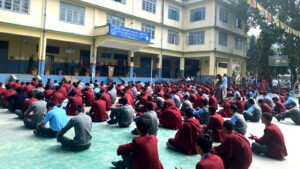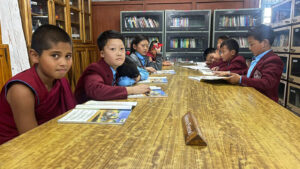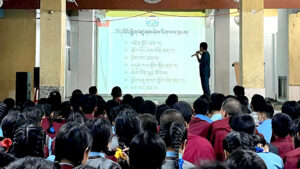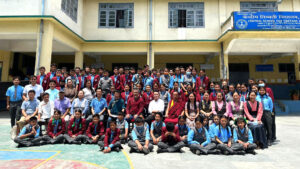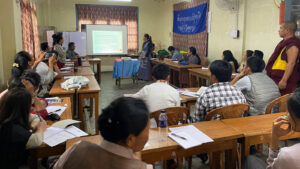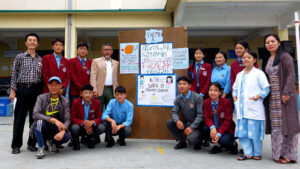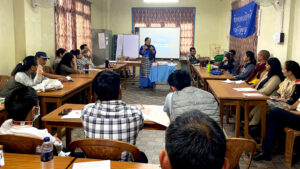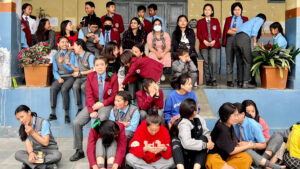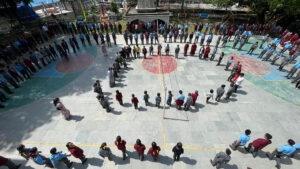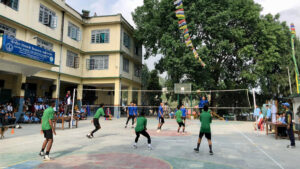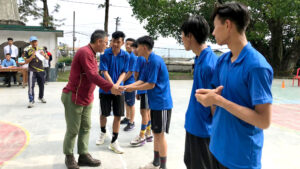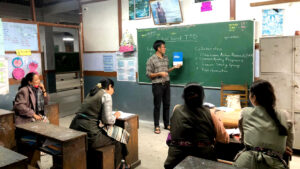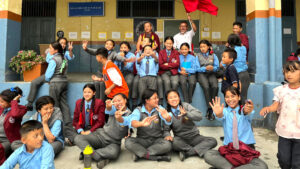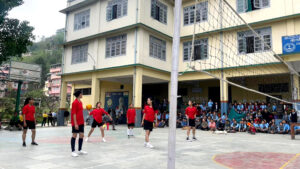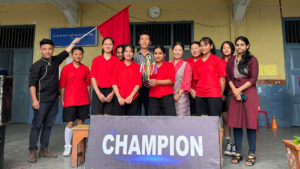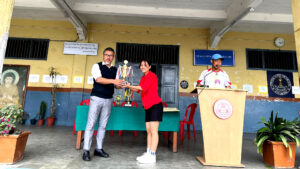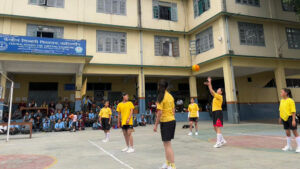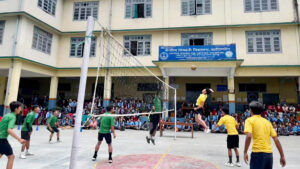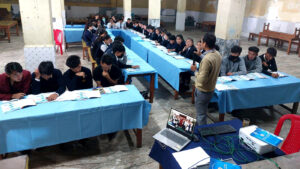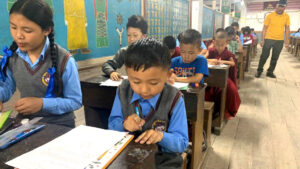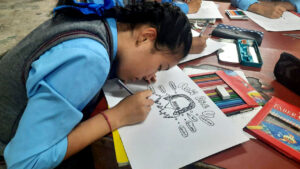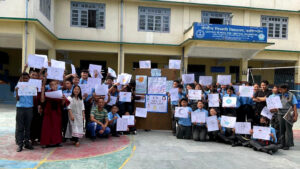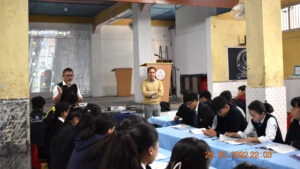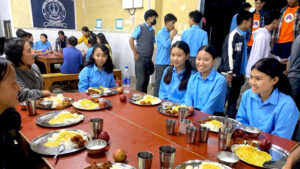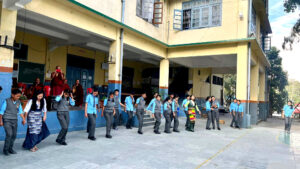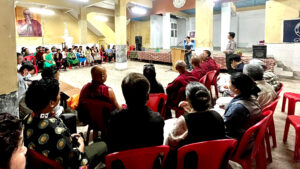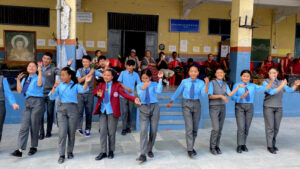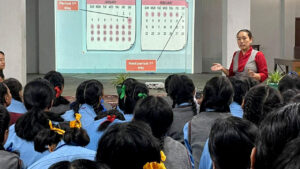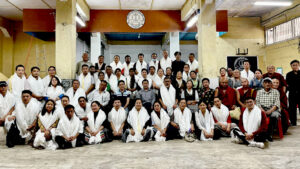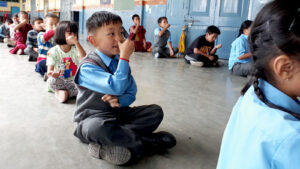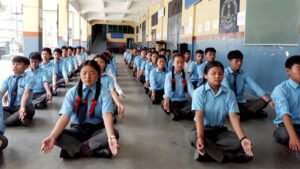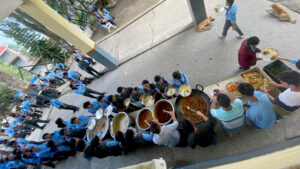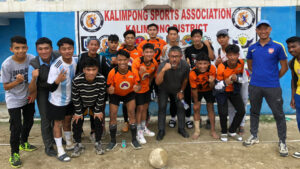Sambhota Tibetan School, Kalimpong
(Senior Secondary School)
CBSE Affiliation No: 2490002, School Code No: 19163
Managed by Sambhota Tibetan Schools Society
(Under the Department of Education, CTA, Dharamsala)
(Registered under the Society Registration Act XXI of 1860) Registration No. S-E/403/Distt. South-EAST/2014
Sambhota Tibetan School, Kalimpong
Sambhota Tibetan School, Kalimpong formerly known as CST Kalimpong was established on the 17th of July 1964. Mr. T. Lhawang was its first Principal who served the school from 1964 through 1971. It is one of the oldest Tibetan schools established by the Government of India specifically for Tibetan refugee children. The primary objective of establishing this school was to cater to the educational needs of young Tibetan refugee children in the aftermath of brutal Chinese occupation of Tibet in the year 1959 and subsequent re-settlement of thousands of Tibetans in India in the early 1960s. It is a Senior Secondary co-educational school affiliated to CBSE Board.
This institution was briefly closed in the year 1971 due to some internal problems in school. The CTSA in Delhi, which managed the school, had then ordered complete closure of school transferring all of its staff members and over 1200 students to various other Tibetan refugee schools scattered across India. Fortunately, one Tibetan teacher and a watchman were asked to remain in school until the process of closure completed and the school building returned to the landlord.
It was during these final days of the CST Kalimpong in 1971 that the local Tibetan community of Kalimpong somehow realized how important it was for them and their children to have the school retained here in Kalimpong. Consequently the local Tibetan community decided to appeal CTSA, Delhi and the Department of Education, CTA Dharamsala, Himachal Pradesh to reopen the school. However, since all the students and staff members were already sent to different Tibetan schools, it was an uphill challenge for the local Tibetan community of Kalimpong to revive the school.
Nevertheless, the school was once again re-established in the year 1971 with around 25 students as a small day school. Gradually as the number of children increased again, the CTSA and the DOE, CTA, agreed to send more teachers and staff members and that’s how this institution overcame its brief but serious existential crises and emerged as an important senior secondary school not only for the Tibetan refugee community and their children but equally also for the local Indian students of the region.
Students:
Children in the school are from various Tibetan settlements located in India and Nepal. Most of the children in the hostel at present are from the state of Arunachal Pradesh and Sikkim. Incidentally both these states share border with Tibet. So we have students from Tibetan settlements in Tezu, Maio, Tenzingang and Tuting apart from small towns and villages like Bomdila, Jigmethang, Lumla etc. all of which are in the state of Arunachal Pradesh. We also have many students from Ravangla, Gangtok, Lachen, Lachung, Chungthang, Nathula, Sherathang in Sikkim. In addition to above remote regions of India, there are many children who come here every year from the farthest corners of Nepal as well.
Students also come to join our school from neighboring district of Darjeeling and its nearby towns like Sonada, Mirik, Pokhriabong etc. Of late, we are witnessing regular influx of students from Lava which is a small village about 35 kms away from Kalimpong. As for the day-school children, majority of them are local Indians although we do have about 62 local Tibetan students as day-scholar as on May, 2022.
Academics:
A student can study here from kindergarten classes up to class XII. The school strives to provide not only the best possible modern education to its students but also strives to contribute to the preservation of unique Tibetan cultural and traditional values, environmental awareness, traditional performing art, music and craft. Non-Tibetan students are equally provided adequate platforms to practice, preserve and promote their own respective culture and traditions. Tibetan language education is given topmost academic priority for Tibetan students especially in elementary and primary standards.
The medium of instruction for the students of class VI to XII is English. While the Tibetan and Himalayan students learn Tibetan as their second language from classes VI onward, others have the choice to learn Hindi as their second language. Hindi is introduced to Tibetan children as the third language in Class VI. Tibetan students study Hindi for three years learning basic grammar, elementary grade literature and writing skills.
The admissions in classes IX and XI for non-Tibetan students are allowed ONLY on the basis of merit in entrance examination conducted by the school. Students seeking admission in Science stream will write entrance exam in subjects like Science, Math and Hindi and those opting for Humanities will appear for English, Social Science and Hindi. For admission in Science stream, a child must have secured at least 65% in his or her class X board examination. He or she must also score 65% or above in both science and mathematics subjects individually.
Hostel:
Hostel administration of the school, from the establishment year 1964 through March, 1996, used to be managed by a few Tibetan teachers purely on voluntarily basis under the guidance of DOE, CTA. The senior girls and junior students were accommodated in dormitories within the main school building. Boys, on the other hand, had their hostel accommodation arranged at some distance from the main school building in a large rented property which we now know as Jamgong Khontrul Memorial School (JKMS).
When the school rapidly grew in enrolment, the administration decided to upgrade the classes from elementary to middle school level from early 1980s. In 1996, the hostels were also handed over to the CTSA, Delhi for proper formal management of its administration. The first Rector of the school Mr. Lobsang Acharya was appointed in April, 1996. There are now three hostels, one each for juniors, senior girls and senior boys. All three hostels are located inside the main school building since 1994.
Admission in hostel is strictly for Tibetan refugee students. However, students belonging from Himalayan regions who study Tibetan as their first or second language subject are also eligible for hostel admission. There is a separate form for hostel admission which can be downloaded from the websites www.sambhota.org / www.sherig.org / www.tibet.net. Admissions into Pre-Primary classes to IXth standard remain open during February-March. Students are allowed admission in Class XI in the month of June, usually after the declaration of board result of class X by the CBSE. Children from Himalayan region will require a certificate from their respective Registered Associations / Boards / Organizations certifying that they belong to Himalayan ethnicity to apply for hostel admission.
Children in hostel are provided free bedding, uniform, books and stationeries. The boarders are also provided free daily necessities like toiletries and other personal care items every month by the school.
The Fee:
All the students are required to deposit Rs. 240 as School Development Fund per annum. Day school children do not pay any fee except for the SDF. Boarders pay Rs. 1,138/- per month for food and other contingency expenditure. Tuition is free for all the students irrespective of whether a child is a day-scholar, boarder, Tibetan or an Indian. Tibetan destitute and BPL children are eligible for 100% fee waiver. However, any fee discount or complete waiver for any student is decided at the headquarters’ level.
The School Land and Building:
The building where the school is housed today was once a “White Wool Godown (Store) back in the 1940s through 50s and until sometime in the year 1960. The school building, then named Jagadamba Building, used to be considered as the largest building in the whole of Kalimpong region. It is still indeed considered as one unique architectural landmark of Kalimpong because of its perfect diagonal shapes and enormous size. This is a massive three storied building uniquely constructed with steel and cement concrete but without using even a single brick in all of this entire structure including the roof top parapet walls.
The construction of this building had completed in 1940, seven years before India became an independent nation. The school building was owned by a businessman named Mr. Nandu Lal. Tibet was then still an independent nation. Most of the Tibetan traders would cross over the border in Sikkim (Sikkim was also an independent country) and then trek the silk route on horsebacks and mules up to Kalimpong. White wool of Tibet was reported to be in great demand in the West. Most of the Tibetan white wool traders from Tibet had maintained great business relationship with Mr. Lal and therefore they mostly preferred selling their wool to Mr. Nandu Lal. Mr. Nandu exported all his white wool to Europe and other countries in the west.
The CTSA had leased this building on rent for school operation from Mr. Lal’s family in 1964. Initially, only the ground and the first floor were rented to school because the third or the top floor was already in use as Government College of Kalimpong under the state government of West Bengal.
In 1997, the entire property including the building and the land measuring 4.9925 Acres was purchased by the Central Tibetan Schools Administration, an Autonomous body under the Ministry of Education, Govt. of India, for proper establishment and expansion of school.
At present the main school building houses all the Classrooms (Montessori to XII Standard), Labs (Computer, Language, MLL, and Science etc), all Hostel Dormitories, Music & Dance Classroom cum equipment store, Library, Exam Cell, Resource Room, Scout & Guide Section, Games & Sports Dept., School Kitchen, Matron’s Quarter, Prayer Hall, Dining Halls, Art and Craft block, Tailoring Section, Garage, Storage rooms besides residences for the Rector and the Principal.
The school also has three separate buildings that are built for staff quarters. All three buildings are occupied by teachers and staff members.
The school dispensary and nurse’s quarter is located separately near the hostels. Two guards appointed by the STSS headquarters oversee round the clock safety and security of students besides ensuring strict vigilance of the school property.
The school has additional security cover in the form of 64 hi-definition CCTV cameras. Our surveillance cameras protect all vulnerable areas including all classrooms, labs, halls, corridors, entrances, stairways etc. and ensure maximum safety and security “precautionary” measure as required under CBSE’s affiliation bye laws. Besides, the institution is also protected by RCC boundary wall and round the clock security personnel.
This institution is now under the management of Sambhota Tibetan Schools Society, an autonomous body under the Department of Education, CTA, Dharamsala, Himachal Pradesh. The CTSA, Delhi had handed over the management of this school to STSS, CTA, on a long term lease with effect from the 23rd of December, 2021 vide LEASE DEED NO. Sl. No. 1748/2021, I-1775/2021 dated 23rd of December, 2021.
Click here to request for the student/staff strength data
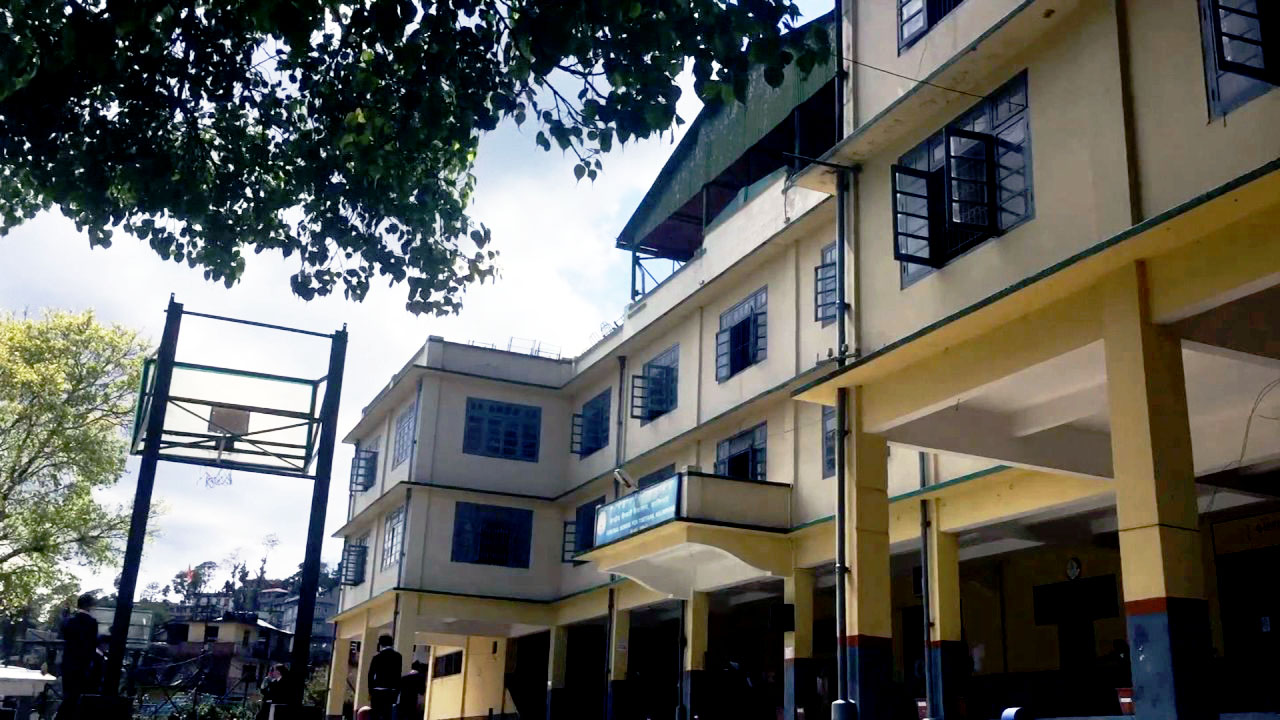
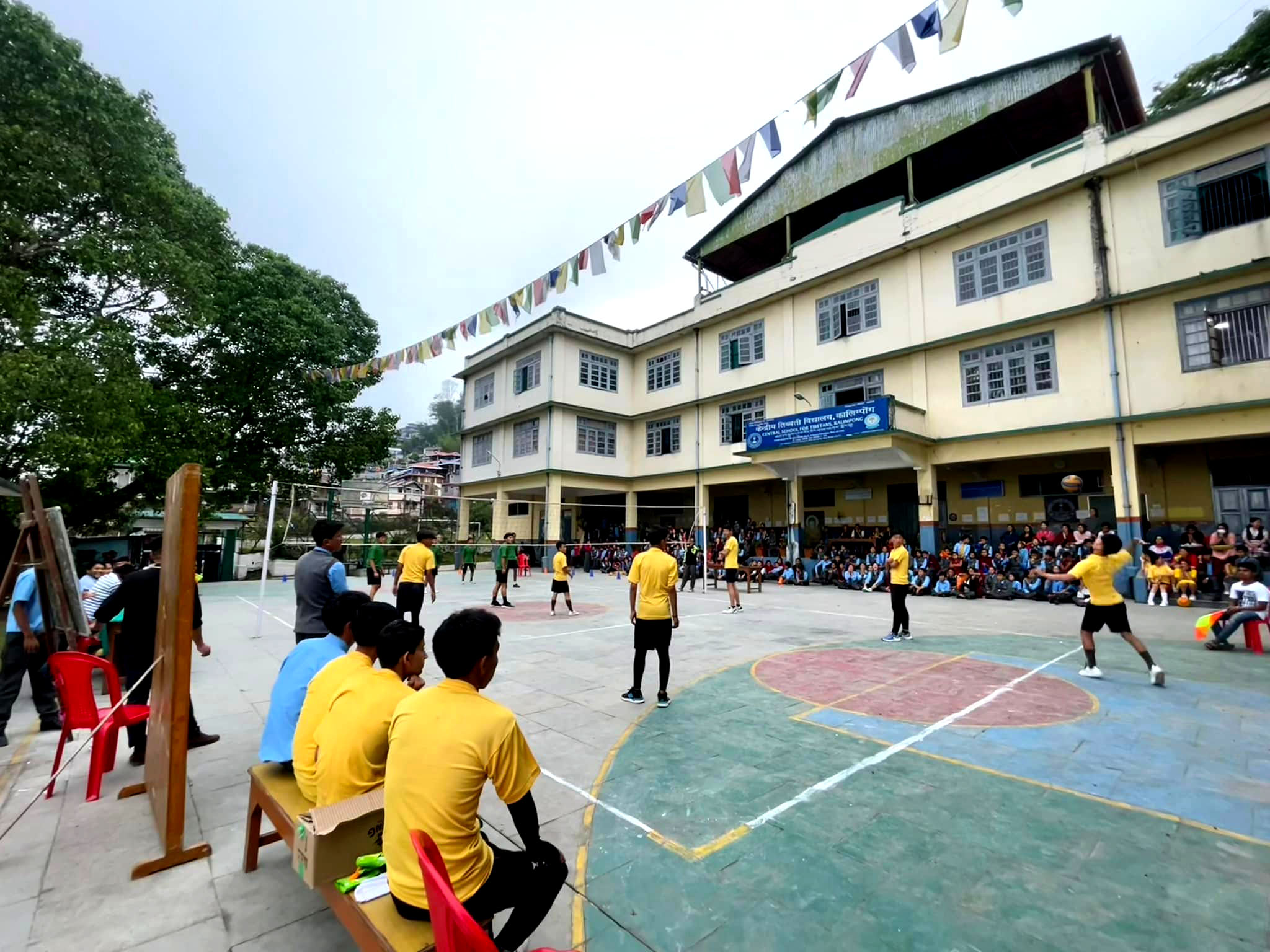
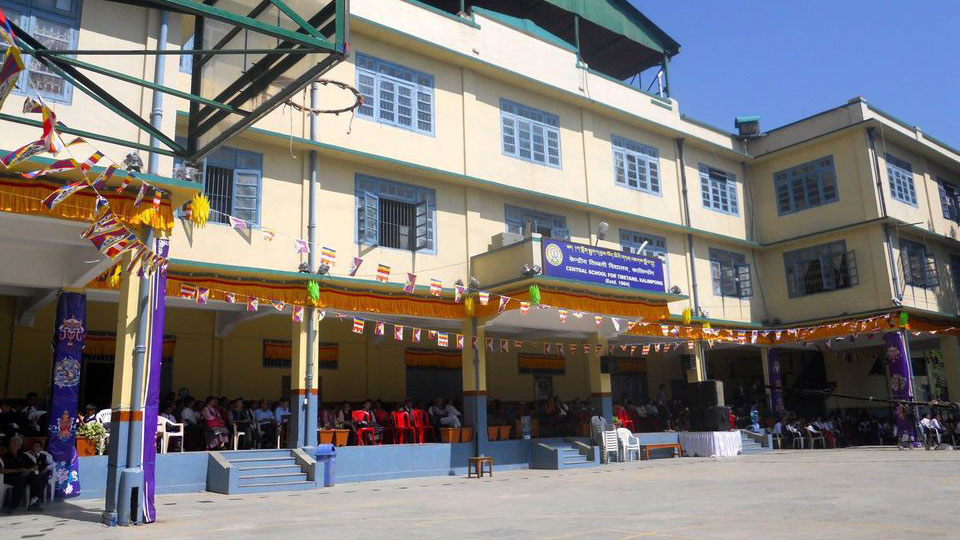
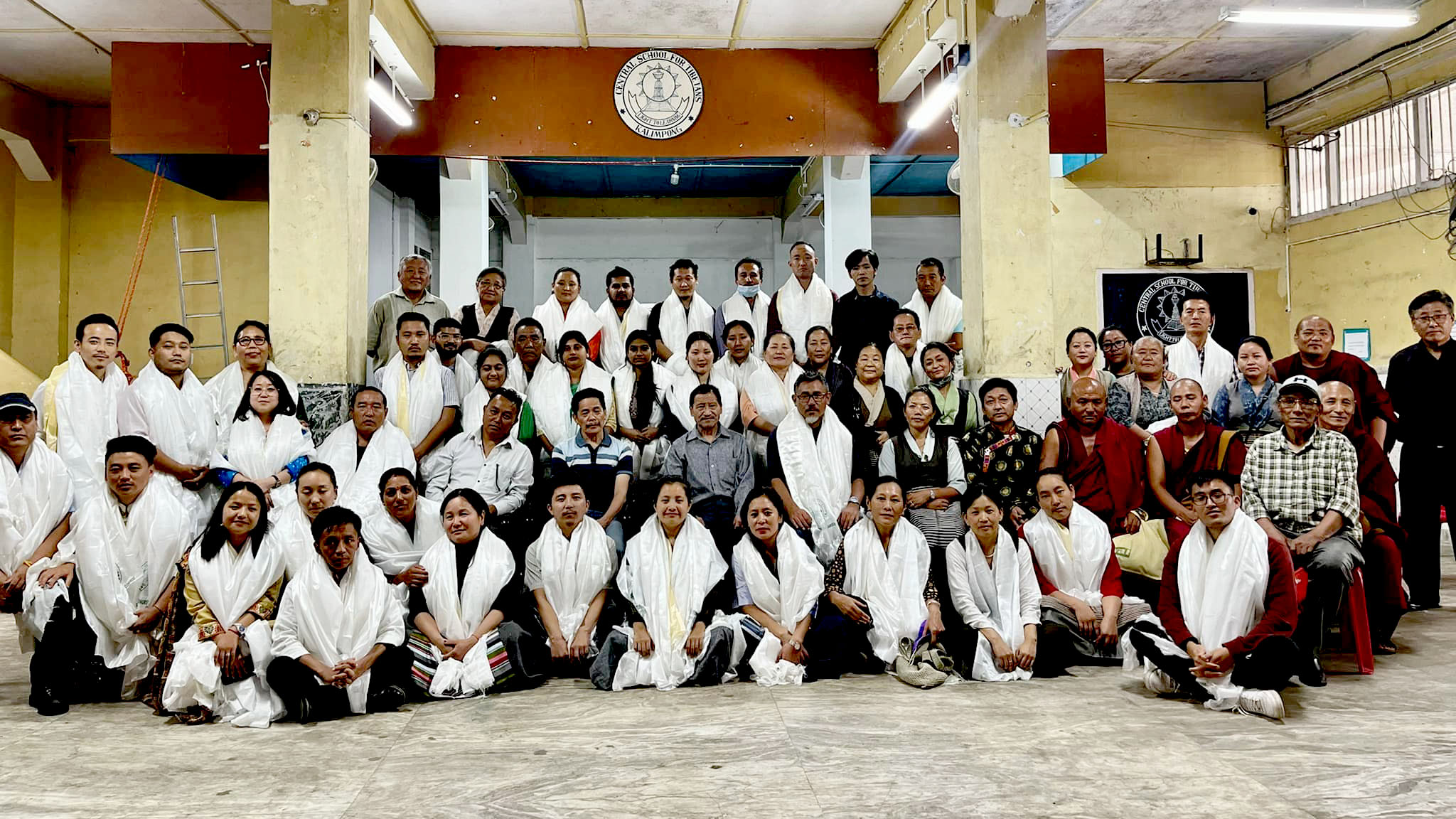
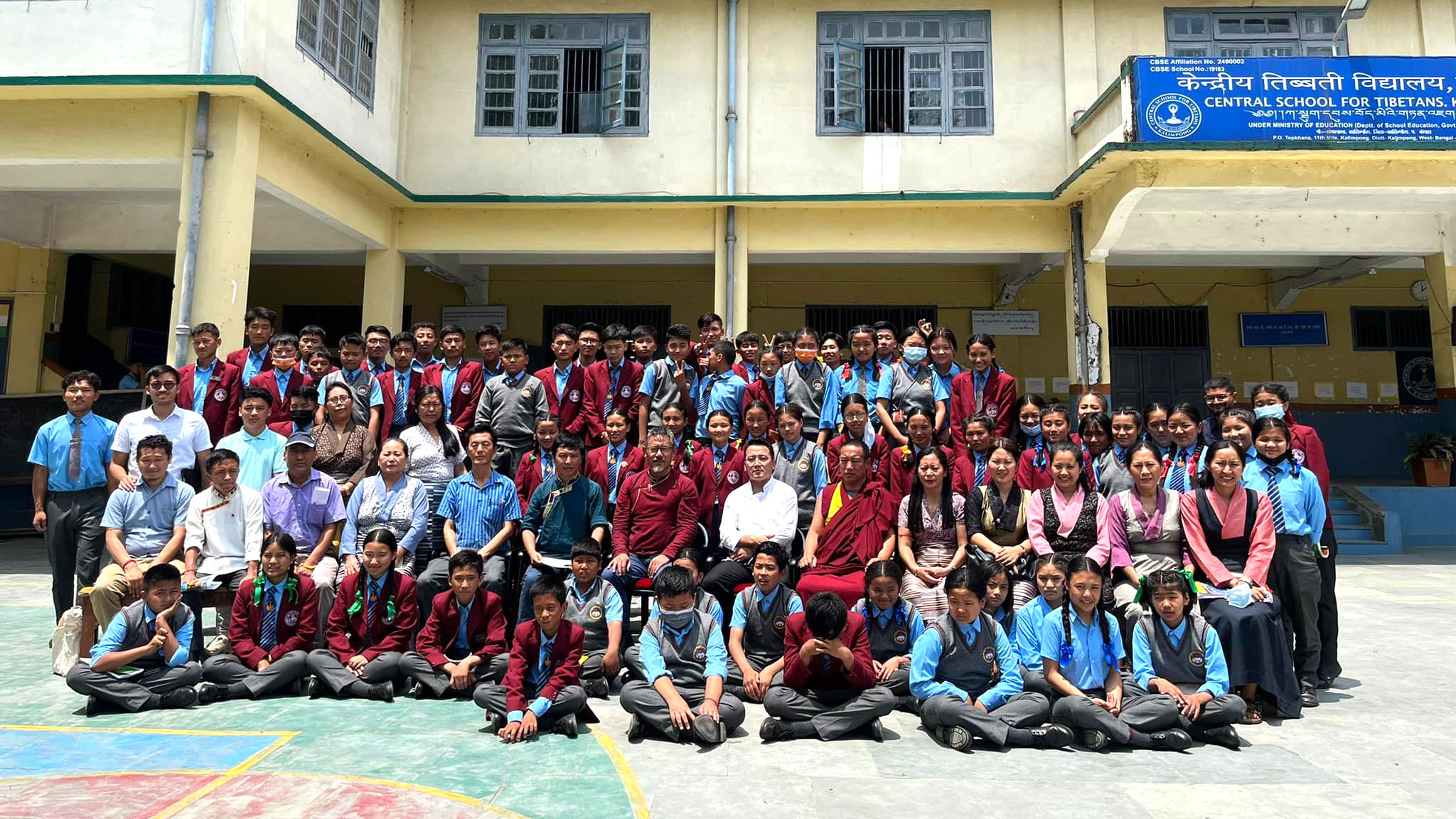
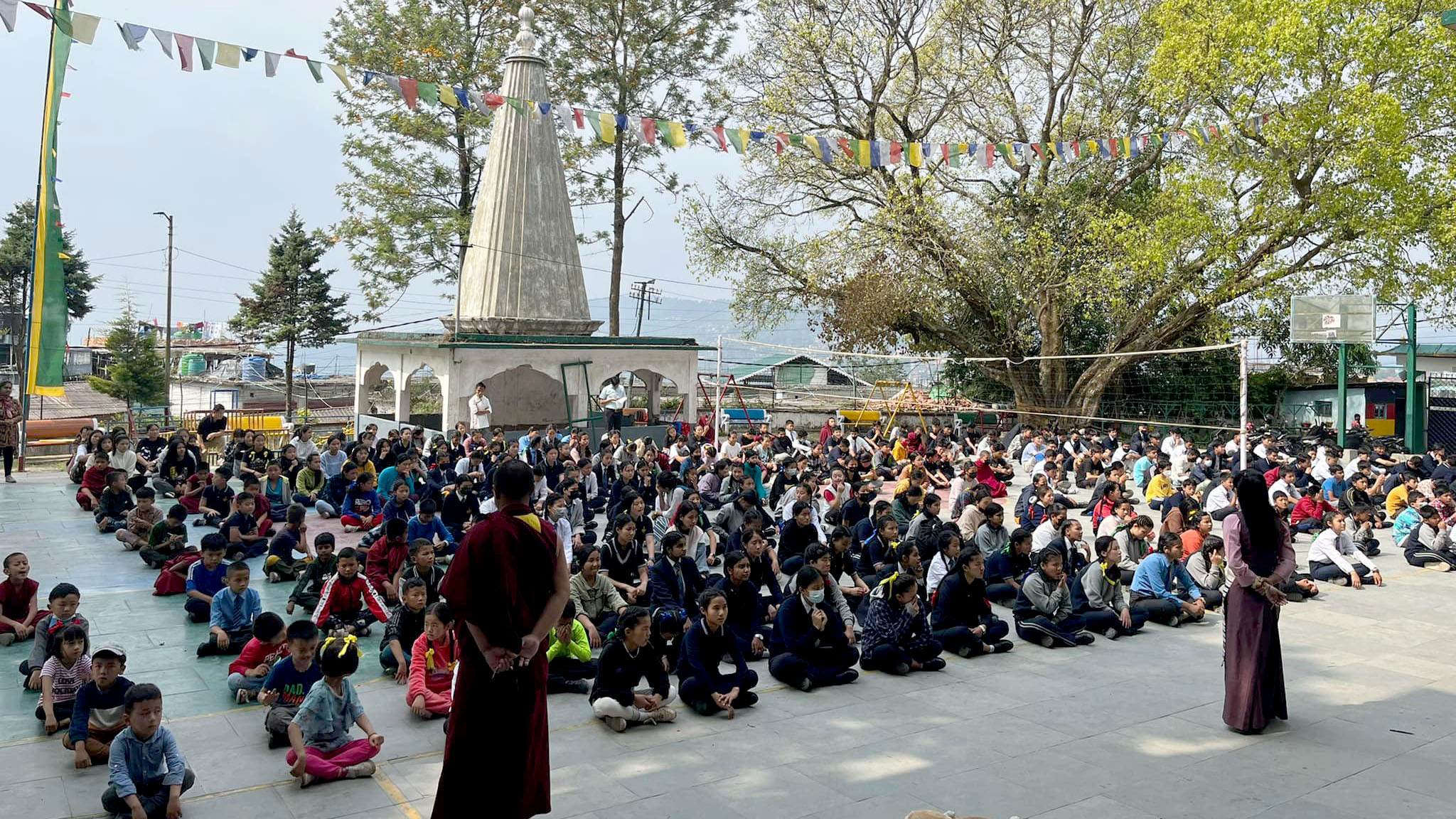
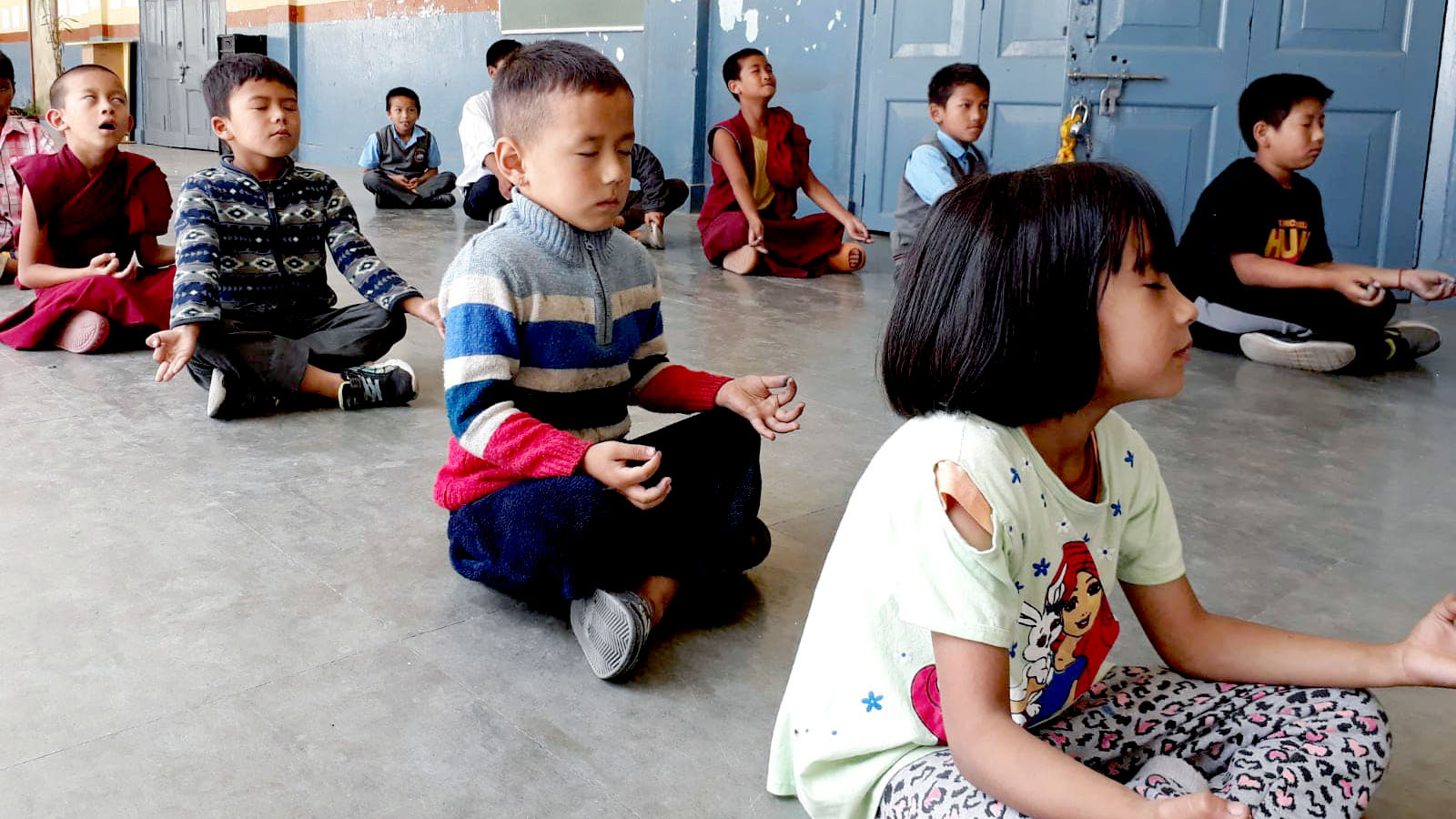

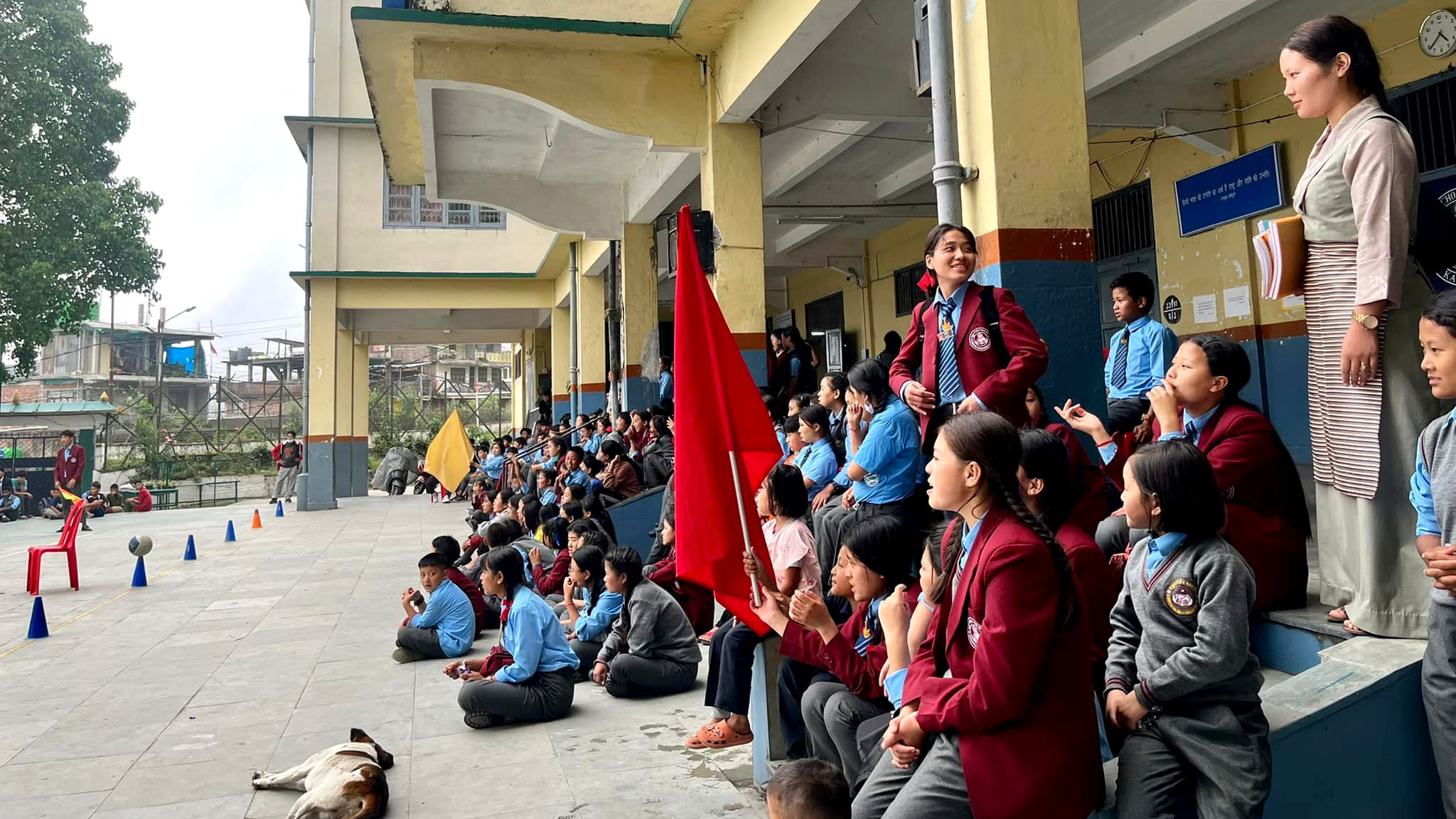

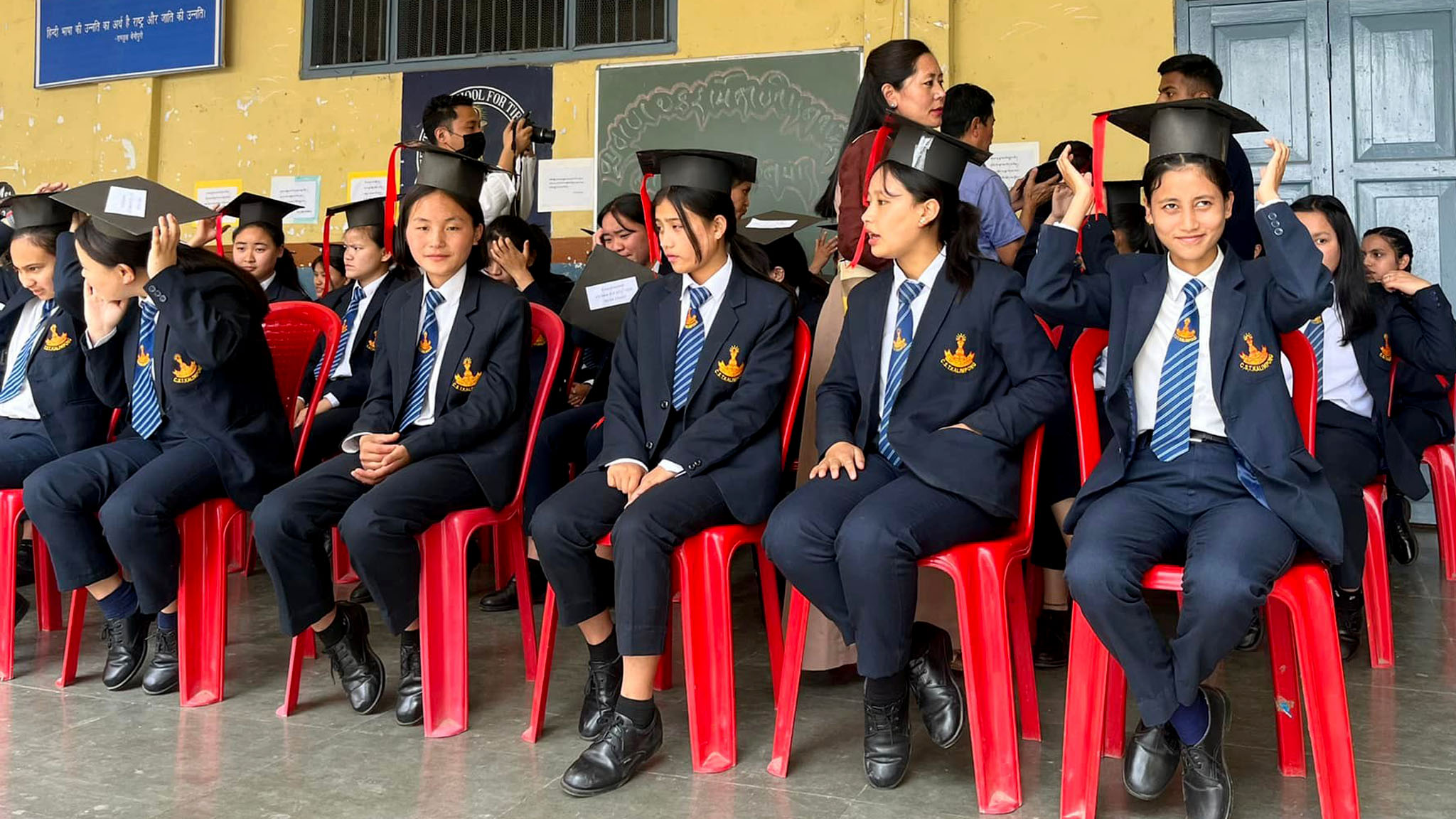
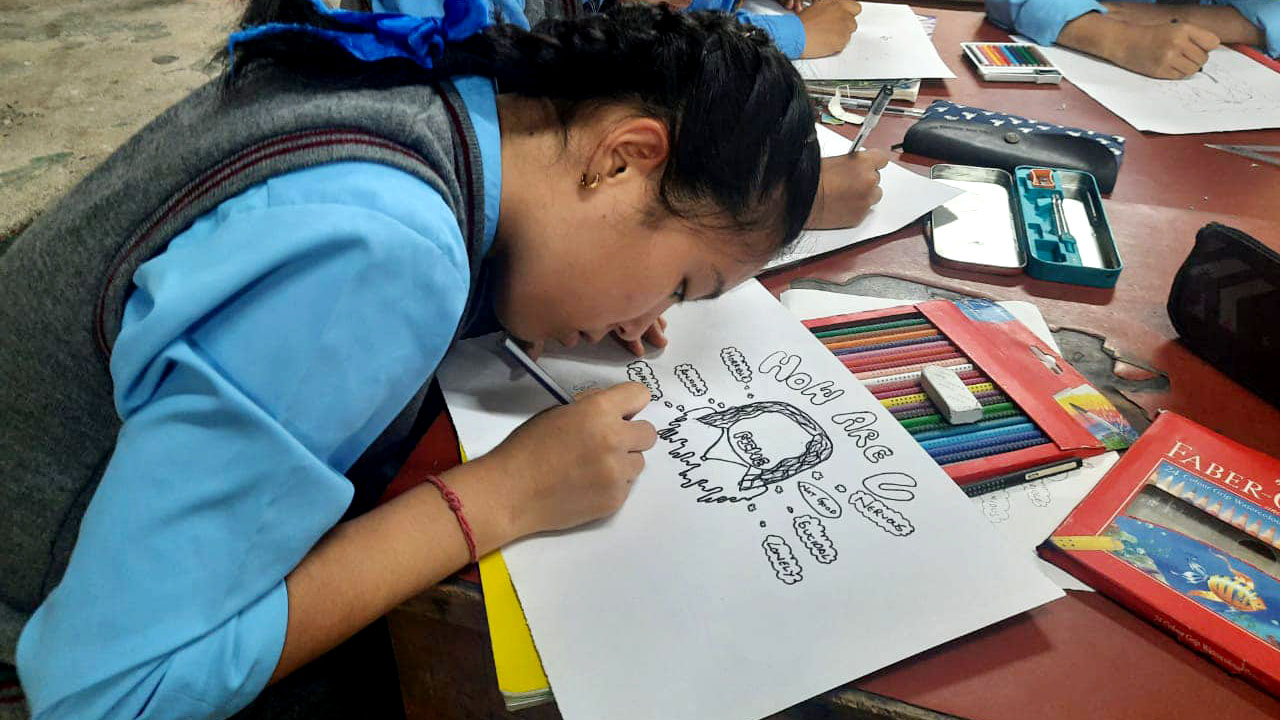
Mrs. Tsering Tsomo
(Principal, STS Kalimpong)
Sambhota Tibetan School, Kalimpong
11th Mile, Topkhana, Kalimpong,
Dist. Darjeeling, West Bengal – 734301.
Contact No.: 03552-255428, 03552-255917
Website: https://stskalimpong.in/
Email:- stskalimpong@gmail.com
Facebook: https://www.facebook.com/Sambhota-Kalimpong
